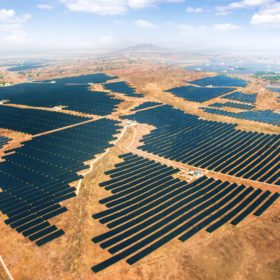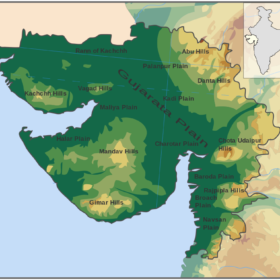REIL seeks 1.2 million multi-crystalline silicon solar cells
September 24 is the last date to submit bids for supplying 1.2 million quantities of multi-crystalline silicon solar cells, half of which is tendered under the domestic content requirement category. Cells are required in peak power ratings of 4.50W (4/5-busbar), 4.60W (5-busbar) and 4.67W (5-busbar).
Rajasthan could add 22.6 GW of new renewable energy capacity to the grid within a decade
The state—which has already installed an aggregate 9.6 GW of renewable energy capacity as of FY 2019-20 end—will add another 22.6 GW to the grid by the end of FY2029-30. Of the new RE addition, 18 GW will come from solar capacity.
Solar leaders call for overhaul to navigate Covid-19
Faced with raw material and labor shortages, solar manufacturers have stressed the need to find alternative supply chains and to push automation and internet of things applications on the factory floor to keep production running.
More efficient large-area organic solar cells with spin coating
Researchers in South Korea have used the process to increase performance and the replicability of large-area organic cells. The method was used during film formation to speed up solvent evaporation.
Fourth Partner raises US$16 million to fund 150 MW of new solar
The Hyderabad-based developer will use the funding from Swiss impact investor Symbiotics and Dutch banking majors Triodos and ASN to construct around 150 MW of new solar assets.
Vanadium redox flow battery for storage of wind and solar power
Researchers in India have developed a 5 kW/25 kWh vanadium redox flow battery with an energy density of 30 watt-hours to 40 watt-hours per liter.
FAME II program backs more than 27,000 EVs
The second phase of the Faster Adoption and Manufacturing of (Hybrid) and Electric Vehicles program offers purchase incentives for electric and hybrid vehicles and also supports charging infrastructure.
How long will the lithium supply last?
Researchers have sounded the alarm. If no serious efforts are made on second-life battery use, recycling and vehicle-to-grid applications, decarbonization efforts may hit the buffers a lot sooner than expected.
Commercial solar rooftops dominate as India nears 6 GW
Bridge to India figures show dominance of Chinese inverters, which supplied almost 80% of installs from July last year to the end of June.
Gujarat extends bidding for 110 MW grid-connected solar and floats new 210 MW tender
Developers now have until September 23 to lodge bids for the 110 MW procurement round and can toss their hat into the ring for a new tender in the district of Jamnagar which closes on October 5.














